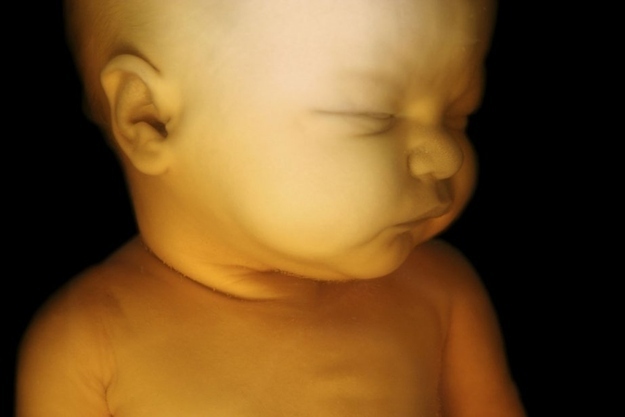The bill to ban abortions after 20 weeks of pregnancy will get a vote in the Senate this month, as America mourns 45 years of virtually unlimited abortions under Roe v. Wade. The House has already approved the legislation but Democrats are expected to filibuster the bill in the Senate, requiring it to get 60 votes to move forward.
In the House, the vote for the Pain Capable Unborn Child Protection Act broke down on mostly partisan lines with Republicans supporting the ban on late-term abortions and Democrats opposing it. The House approved the bill on a 237-189 vote.
The Senate would need 60 votes to pass the bill because pro-abortion Democrats would filibuster. Should the Senate approve the bill, President Donald Trump would sign the pro-life bill into law.
“Overwhelming majorities of Americans—some 60-64% according to pollsters—support legal protection for pain-capable unborn children,” said pro-life Congressman Chris Smith. “Today we know that unborn babies not only die but suffer excruciating pain during dismemberment abortion—a cruelty that rips arms and legs off a helpless child.”
During the House debate, Smith talked about the gruesome nature of late-term abortions.
A former abortionist, Dr. Anthony Levatino, testified before Congress that he had performed 1,200 abortions—over 100 late-term abortions up to 24 weeks.
Dr. Levatino described what the abortionist actually does to the helpless child. “Imagine if you can that you are a pro-choice obstetrician/gynecologist like I was.” Using a Sopher 13” clamp with rows of ridges or teeth, “grasp anything you can” inside the womb. “Once you’ve grasped something inside, squeeze on the clamp to set the jaws and pull hard—really hard. You feel something let go and out pops a fully formed leg about six inches long. Reach in again and grasp anything you can…and out pops an arm.” He noted that “a second trimester D&E abortion is a blind procedure.” He said, “Reach in again and again with that clamp and tear out the spine, intestines, heart and lungs.”
SIGN THE PETITION! Congress Must Ban Late-Term Abortions
Sixteen states have enacted similar laws that ban abortions after 20 weeks. These include Ohio, Texas, Nebraska, Idaho, Oklahoma, Alabama, Georgia, Louisiana, Arkansas, North Dakota, South Dakota, West Virginia, Wisconsin, South Carolina, Kentucky and Kansas.
The House passed the measure in 2015 as well and that marked the second time the House has voted for the legislation — having approved it in May 2013. The bill was then blocked by pro-abortion Democrats who controlled the U.S. Senate.
During the hearing on the last bill, former abortion practitioner Anthony Levatino told members of the committee the gruesome details of his former abortion practice and how he became pro-life following the tragic automobile accident of his child.
Another bombshell dropped during the hearing came from Dr. Maureen Condic, who is Associate Professor of Neurobiology and Adjunct Professor of Pediatrics at the University of Utah School of Medicine. She testified that the unborn child is capable of reacting to pain as early as 8-10 weeks. This is when most abortions in America take place.
Americans strongly support legislation that would ban late-term abortions and protect babies who are capable of feeling intense pain during an abortion.
Currently, 16 states have pain-capable unborn child protection laws in effect, Kentucky being the most recent. Other states are considering similar bills.
Together, these laws potentially are saving thousands of babies from painful, late-term abortions. There were at least 5,770 late-term abortions at or after 21 weeks of pregnancy in 2013 in the U.S., according to the Centers for Disease Control. Another approximate 8,150 abortions took place between 18 weeks and 20 weeks, the CDC reports.
Though abortion advocates deny the science of fetal pain at 20 weeks, researchers have fully established fetal pain at 20 weeks or earlier. Dr. Steven Zielinski, an internal medicine physician from Oregon, is one of the leading researchers into it. He first published reports in the 1980s to validate research showing evidence for unborn pain.
At 20 weeks, the unborn child has all the parts in place – the pain receptors, spinal cord, nerve tracts, and thalamus – needed for transmitting and feeling pain. The unborn child responds to touch as early as week 6; and by week 18, pain receptors have appeared throughout the child’s body.
Dr. Colleen A. Malloy, a professor of neonatology at Northwestern University’s Feinberg School of Medicine, told a U.S. Senate committee last year that “anesthesiologists, and surgeons use pain medication” for unborn babies at the 20 week stage when performing surgery, “because it’s supported by the literature completely.”
“I could never imagine subjecting my tiny patients to a horrific procedure such as those that involve limb detachment or cardiac injection,” Malloy added.








